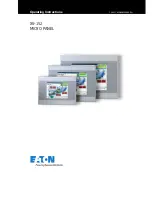
Configurations and Help with Selection
2.2 Configuration of F-Systems
Safety Engineering in SIMATIC S7
2-8
System Manual, 04/2006, A5E00109529-05
Advantages
Coexistence of F-components, H-components, and standard components has the following
advantages:
•
It is possible to configure a totally integrated automation system that takes advantage of
standard CPU innovation. At the same time, fail-safe components are implemented
independently of standard components such as FMs or CPs. The entire system is
configured and programmed with standard tools such as
HW Config, FBD, LAD, or CFC.
•
The coexistence of standard and fail-safe program parts in one F-CPU reduces the cost
of acceptance tests because program parts not required to be fail-safe can be swapped
out to the standard user program. This reduces the size of the safety program, that is, the
part of the program that must pass an acceptance test.
Maintenance costs can also be reduced if as many functions as possible are moved to
the standard user program, since the standard user program can be modified during
operation.
Boundary Conditions for Coexistence
Warning
For applications with safety class SIL2/Category 3 and lower, physical contact protection
measures for standard components are sufficient (see the manuals for the F-CPU and F-I/O
you are using).
Applications with safety class SIL3/Category 4 require certain measures beyond physical
contact protection to prevent hazardous overvoltages of F-circuits via the power supply and
backplane bus, even in the event of a fault. Therefore, the following are provided for
protection from backplane bus influence:
•
Safety protector for centralized and decentralized configuration of S7-300 F-SMs
•
For S7 F/FH Systems, PROFIBUS DP with fiber-optic cable design
•
ET 200S fail-safe modules and ET 200eco fail-safe I/O module exhibit a 250 VAC isolation
internally.
To protect against influence by the power supply, configuration rules for power supplies,
standard I/O, and fail-safe I/O are available (see
Fail-safe I/O manuals).
Rules for Using the Safety Protector
The safety protector protects the F-SMs from possible overvoltages in the event of a fault.
Warning
The safety protector must be used for SIL3/Category 4 applications:
•
Generally, when the F-SMs are used as centralized modules in an S7-300
•
Generally, when PROFIBUS DP is configured with copper cable
•
When PROFIBUS DP is configured with fiber-optic cable and combined operation of standard and
fail-safe SMs in one ET 200M is required
For a detailed description of the safety protector, refer to the
Automation System S7-300
Fail-safe Signal Modules manual.
















































